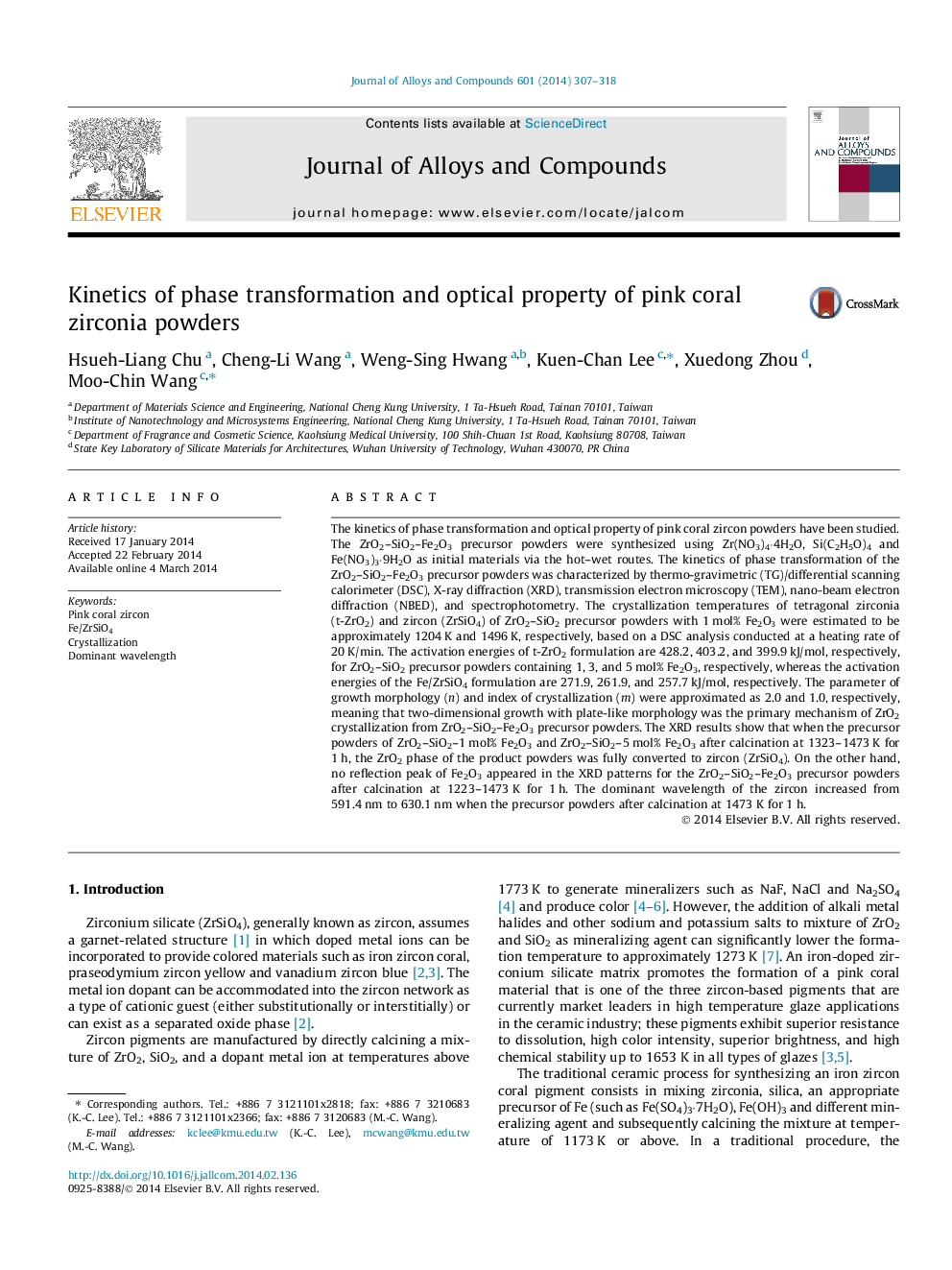| Article ID | Journal | Published Year | Pages | File Type |
|---|---|---|---|---|
| 1611276 | Journal of Alloys and Compounds | 2014 | 12 Pages |
•The single phase of tetragonal ZrO2 formed when calcined at 1223 K for 1 h.•The tetragonal ZrO2 fully converted to ZrSiO4 when calcined at 1323–1473 K for 1 h.•The activation energy of t-ZrO2 formed is 399.9 kJ/mol when 5 mol% Fe2O3 added.•The activation energy of the Fe/ZrSiO4 formed is 257.7 kJ/mol when 5 mol% Fe2O3 added.•The growth morphology parameter and crystallization index are about 2.0 and 1.0.
The kinetics of phase transformation and optical property of pink coral zircon powders have been studied. The ZrO2–SiO2–Fe2O3 precursor powders were synthesized using Zr(NO3)4⋅4H2O, Si(C2H5O)4 and Fe(NO3)3⋅9H2O as initial materials via the hot–wet routes. The kinetics of phase transformation of the ZrO2–SiO2–Fe2O3 precursor powders was characterized by thermo-gravimetric (TG)/differential scanning calorimeter (DSC), X-ray diffraction (XRD), transmission electron microscopy (TEM), nano-beam electron diffraction (NBED), and spectrophotometry. The crystallization temperatures of tetragonal zirconia (t-ZrO2) and zircon (ZrSiO4) of ZrO2–SiO2 precursor powders with 1 mol% Fe2O3 were estimated to be approximately 1204 K and 1496 K, respectively, based on a DSC analysis conducted at a heating rate of 20 K/min. The activation energies of t-ZrO2 formulation are 428.2, 403.2, and 399.9 kJ/mol, respectively, for ZrO2–SiO2 precursor powders containing 1, 3, and 5 mol% Fe2O3, respectively, whereas the activation energies of the Fe/ZrSiO4 formulation are 271.9, 261.9, and 257.7 kJ/mol, respectively. The parameter of growth morphology (n) and index of crystallization (m) were approximated as 2.0 and 1.0, respectively, meaning that two-dimensional growth with plate-like morphology was the primary mechanism of ZrO2 crystallization from ZrO2–SiO2–Fe2O3 precursor powders. The XRD results show that when the precursor powders of ZrO2–SiO2–1 mol% Fe2O3 and ZrO2–SiO2–5 mol% Fe2O3 after calcination at 1323–1473 K for 1 h, the ZrO2 phase of the product powders was fully converted to zircon (ZrSiO4). On the other hand, no reflection peak of Fe2O3 appeared in the XRD patterns for the ZrO2–SiO2–Fe2O3 precursor powders after calcination at 1223–1473 K for 1 h. The dominant wavelength of the zircon increased from 591.4 nm to 630.1 nm when the precursor powders after calcination at 1473 K for 1 h.
